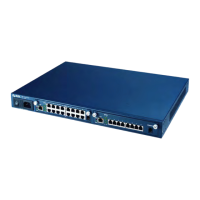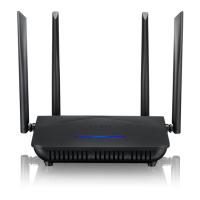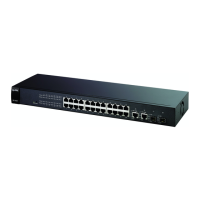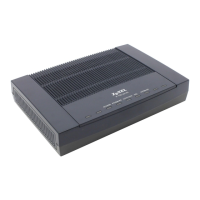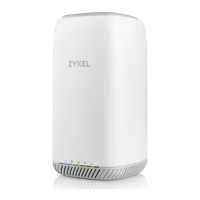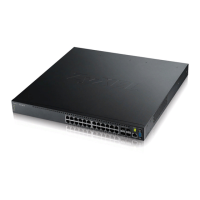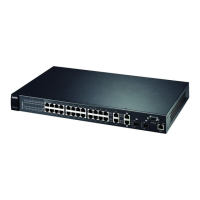Chapter 9 The CLI
IES4005M User’s Guide
70
Figure 39 Non-Unique Partial Command Example
9.4 Common Command Notation
The following table describes commonly used command parameter notation.
ras# c
[TAB]
clear configure copy
ras# co
[TAB]
configure copy
Table 49 Common Command Notation
NOTATION DESCRIPTION
[…]
The optional fields in a command are enclosed in square brackets [], for instance, ip ping
<ip-address> [<count>] means that the count field is optional.
|
The | symbol means “or”.
etype
Ethernet type in hexadecimal (0000-FFFF).
index
This is an integer that sets the index number of a table entry. The range starts at 1. The end
of the range varies by command.
ip-address
This represents a valid IP version four address in dotted decimal notation. 192.168.1.1 is an
example.
ipv6-
address
This represents a valid IP version six address.
::0 ~ ffff:ffff:ffff:ffff:ffff:ffff:ffff:ffff
mac
This represents a MAC address in a0:c5:12:34:56:78 format. 00:00:00:00:00:00-
FF:FF:FF:FF:FF:FF
mask
This represents the bit number of the subnet mask of an IP address. The range is 0 to 32 for
IPv4 or 0 to 128 for IPv6.
To find the bit number, convert the subnet mask to binary and add all of the 1’s together.
Take “255.255.255.0” for example. 255 converts to eight 1’s in binary. There are three
255’s, so add three eights together and you get the bit number (24).
pbit
This is a priority bit (0-7).
port
This represents the UDP or TCP port number of a service.
priority
The VLAN priority setting (0-7).
protocol
An IP protocol 0-255.
slot
This represents the number of an individual chassis slot where a control or line card is
located.
0 is the control card. 2-5 are the line cards.
<slot>/
<port>
This represents the number of an individual chassis slot where a line card is located and the
number of a port. You can specify a single port.
slot: 2-5
port: 1-N where N is the number of ports on the line card.
slot/
portlist
This specifies DSL ports on a line card in an individual chassis slot (2-5).
You can specify individual ports on the cards in different slots, for example 1/1,1/3,2/1,2/3
Use * to specify all of a line card’s ports: 1/*,2/1,2/3
You can also include a range of ports: 1/1-1/12
uni-vlan
The VLAN ID on the UNI (User Network Interface) ports, 1-4093.

